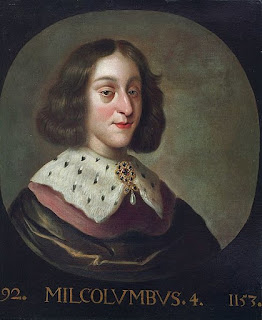Malcolm IV

King Malcolm IV They called him the Maiden King – a touch unfairly, perhaps – because he was perceived to be more of a monk than a monarch. He was also Scotland's first child king, taking up the throne at the age of 13 and dying at 24 before he had a chance to prove his manhood. Nevertheless, the reign of Malcolm IV, from 1153 to 1165, earned good contemporary reviews after its relatively seamless continuation of policies and outlook of his grandfather and predecessor David I Malcolm's father, David I's son Earl Henry, had died tragically and suddenly in his thirties in 1152 while he had been proving himself an equally able successor to his father. In 1139 Henry had married Ada de Warenne, the daughter of the Earl of Surrey, a leading Anglo-Norman baron. As soon as Earl Henry was dead, David saw to it that Henry's oldest son, Malcolm, then aged 12, was the new king-designate. He handed the boy over to Earl Duncan MacDuff of Fife, the foremost Scottish earl, who, at the...






